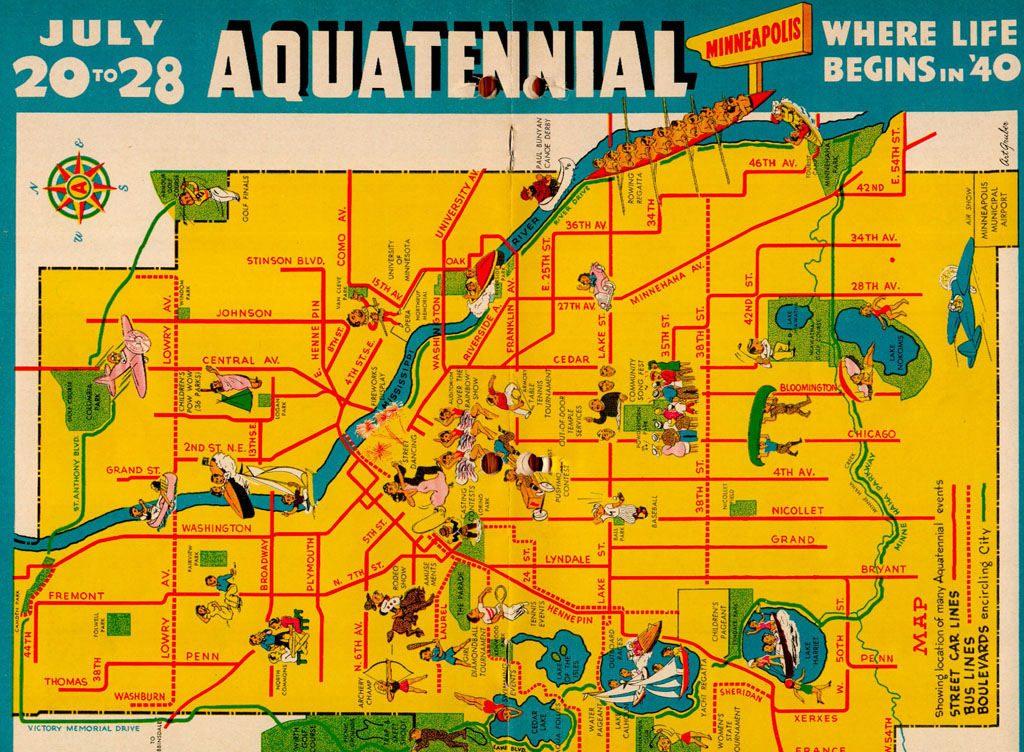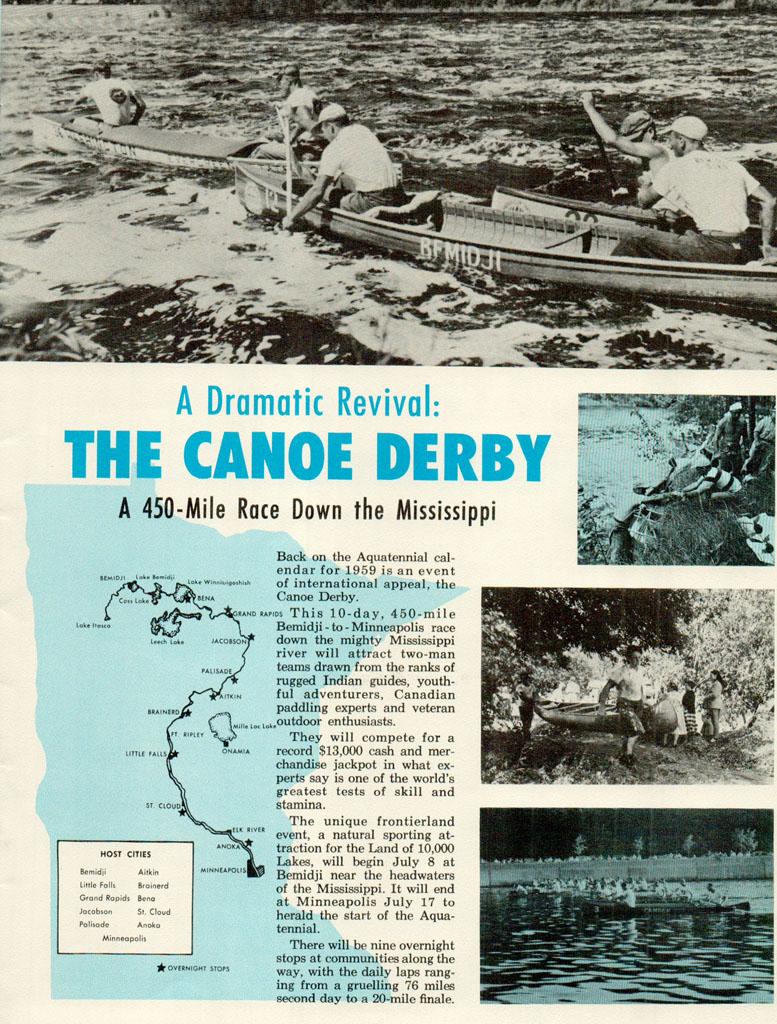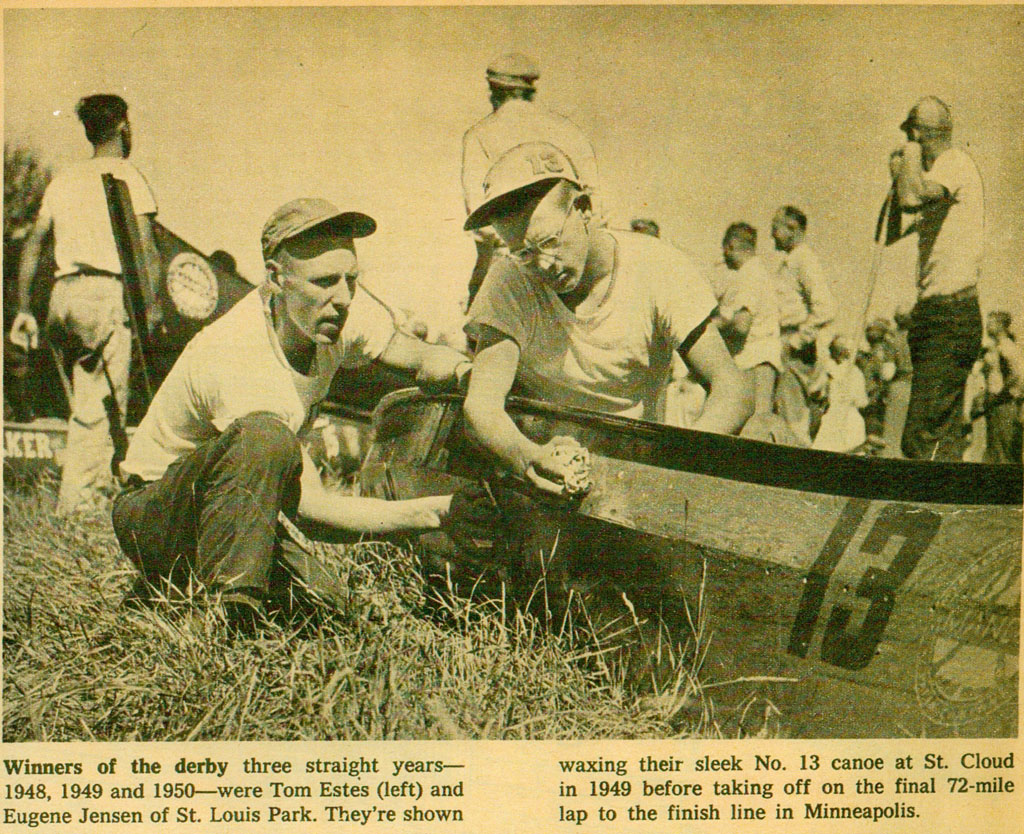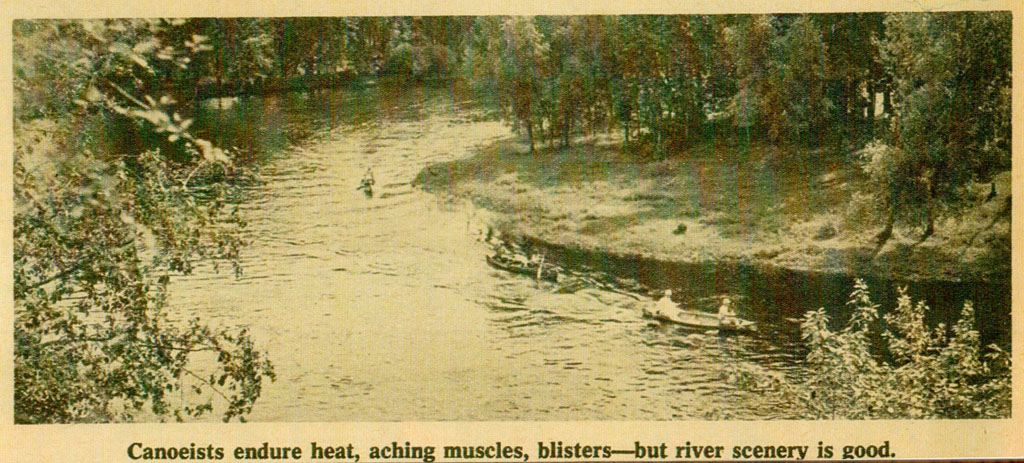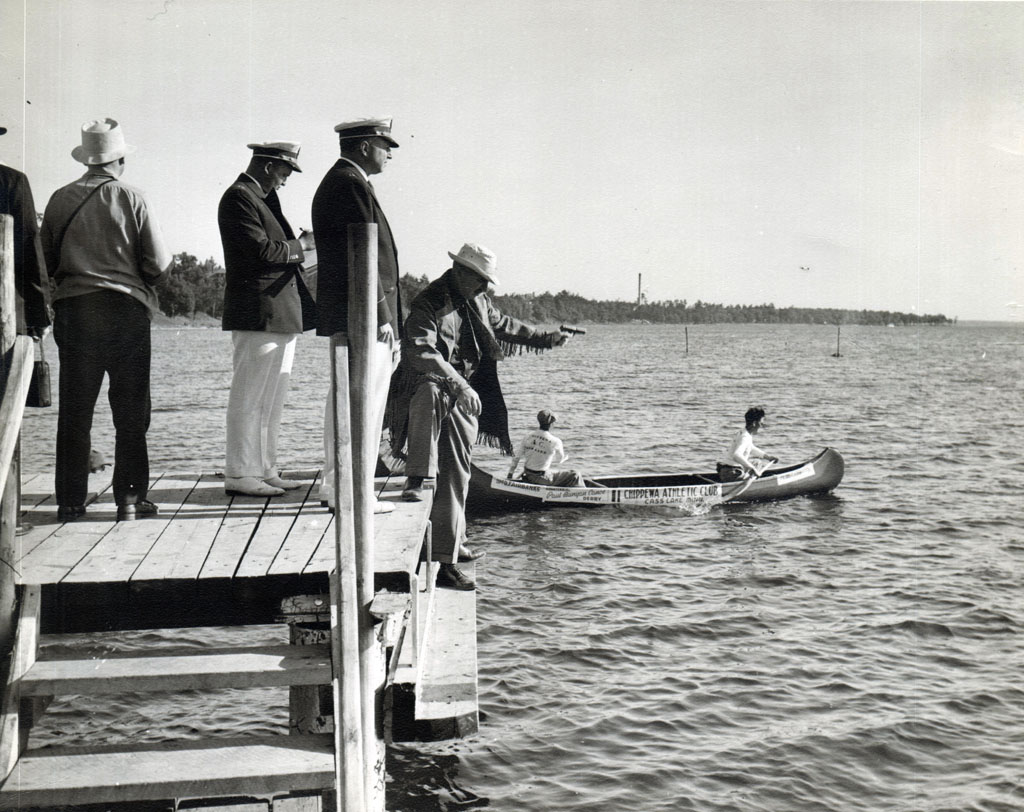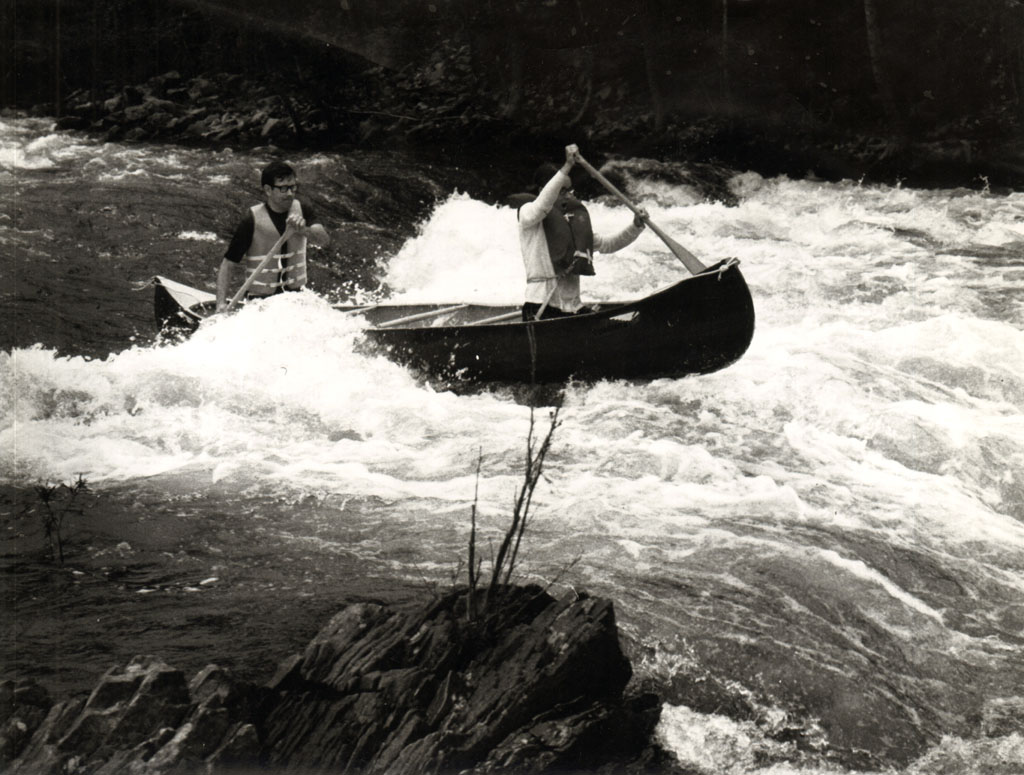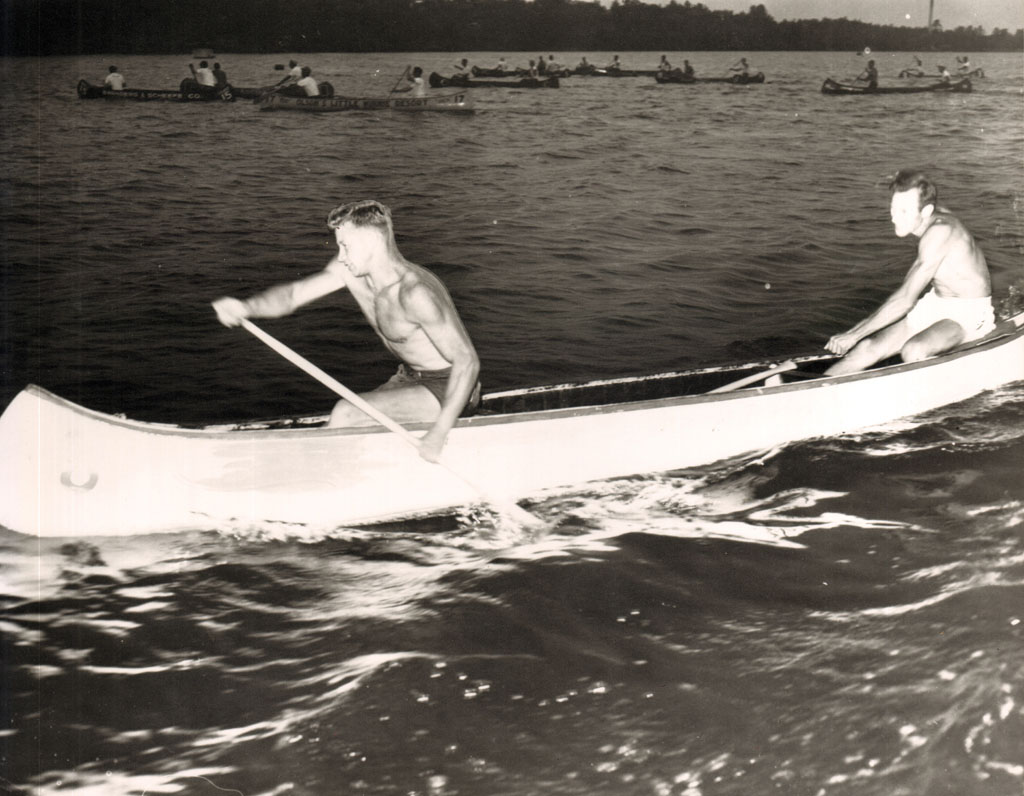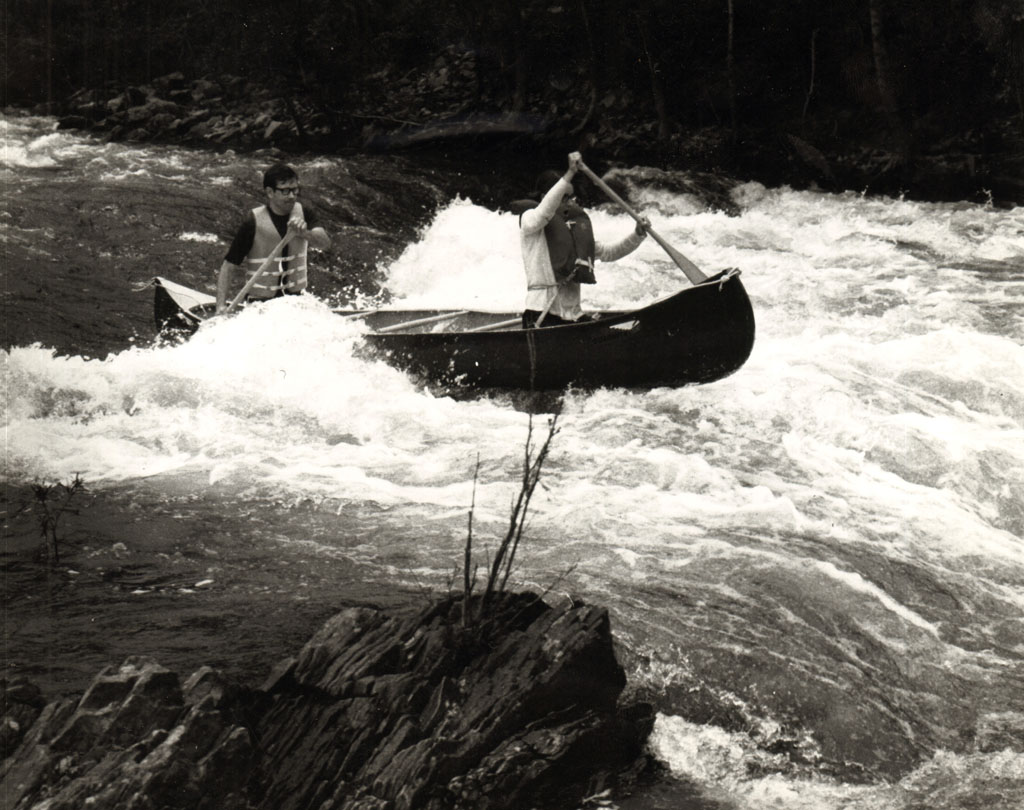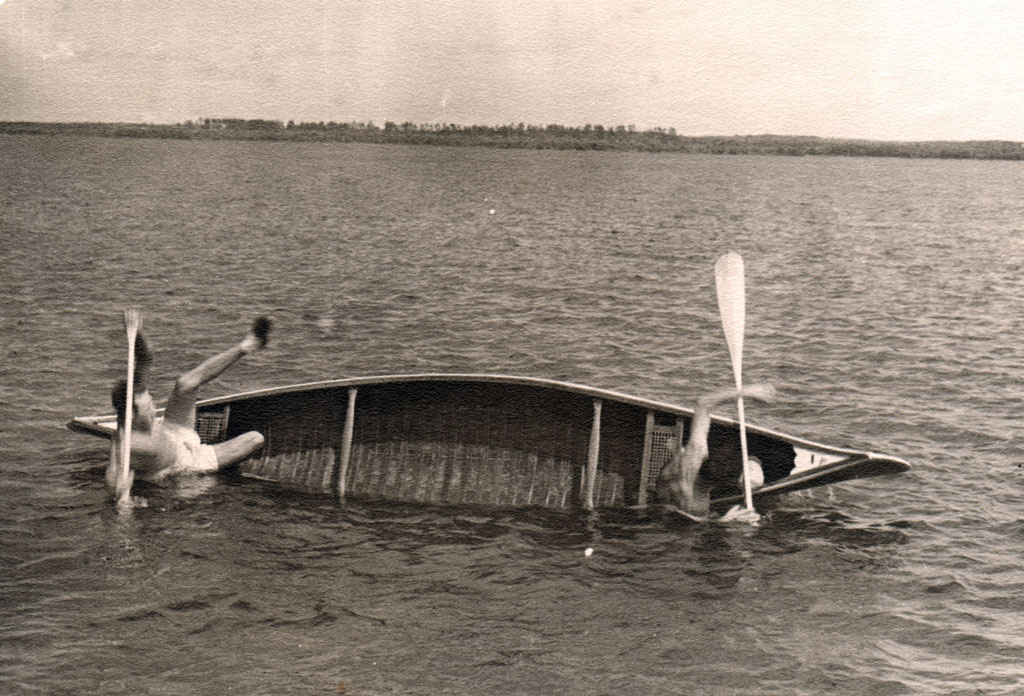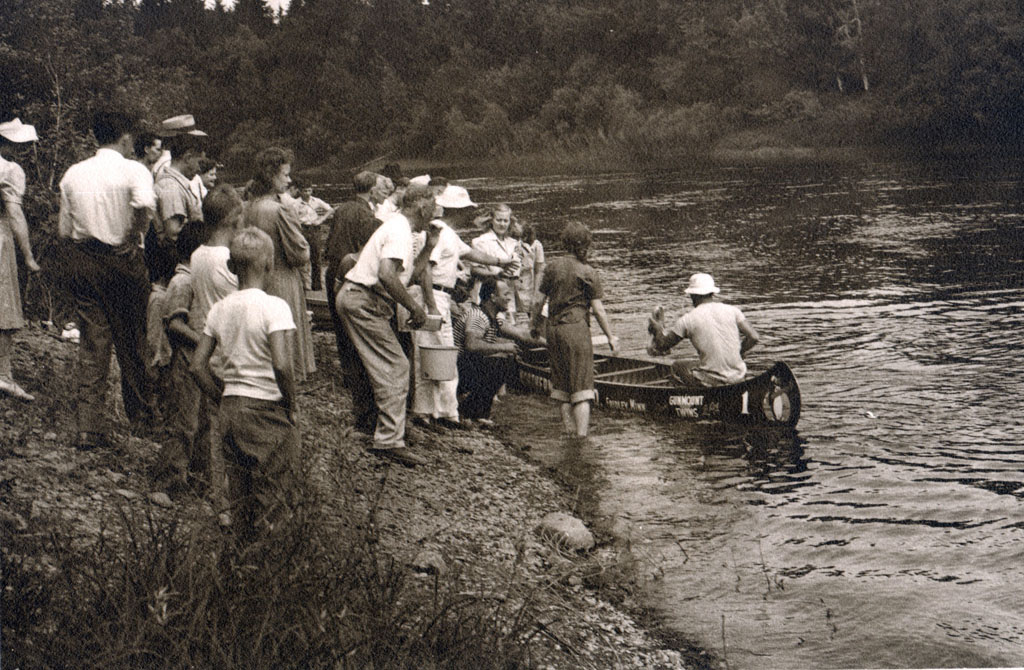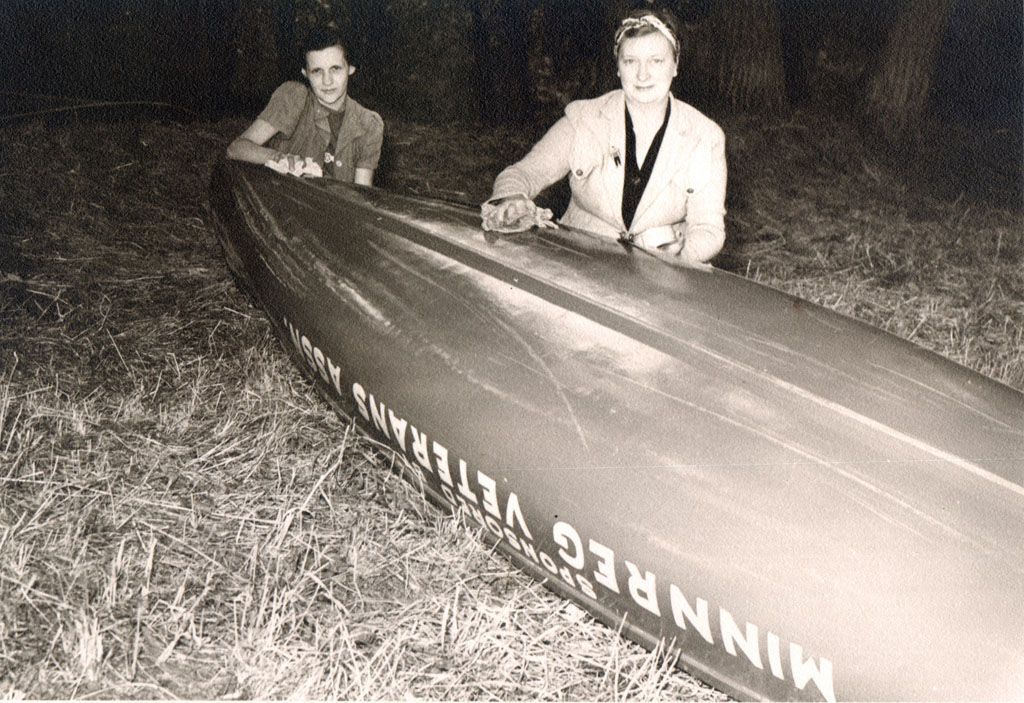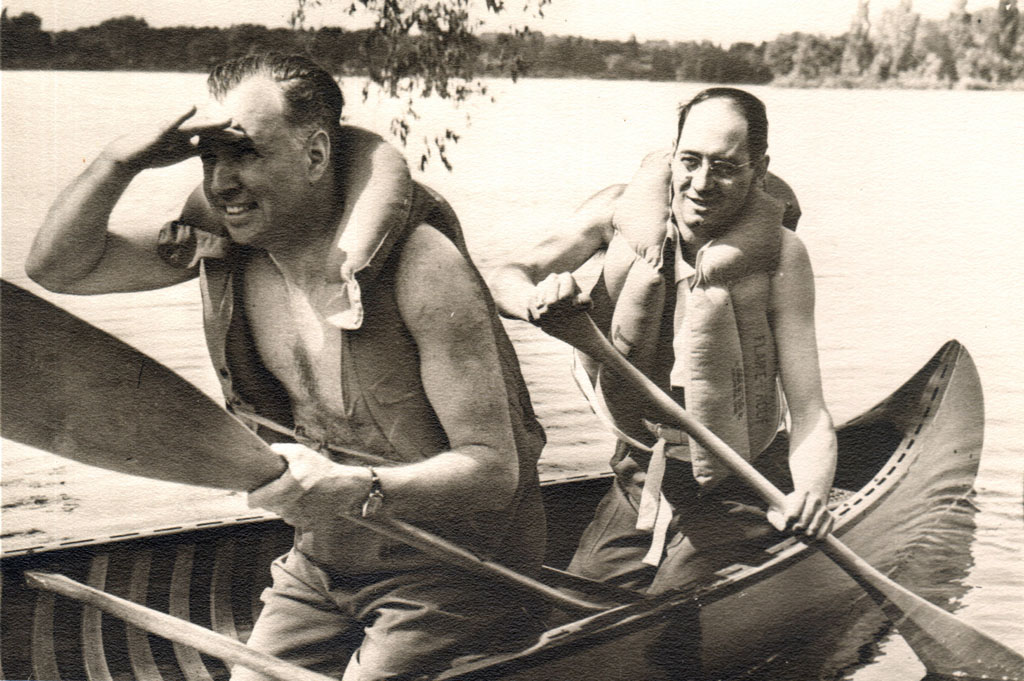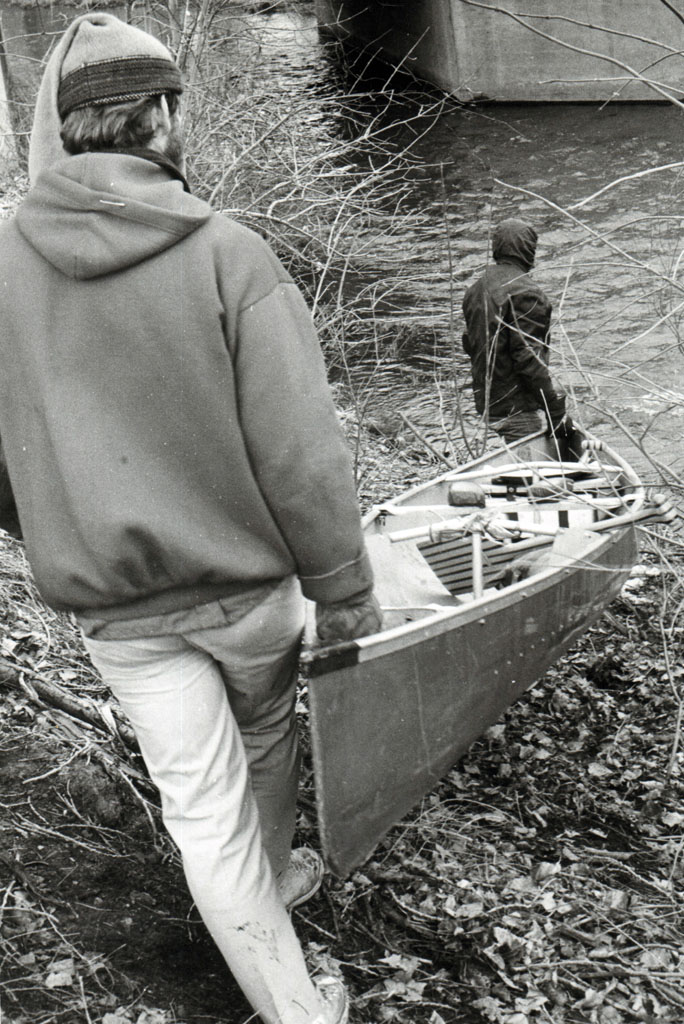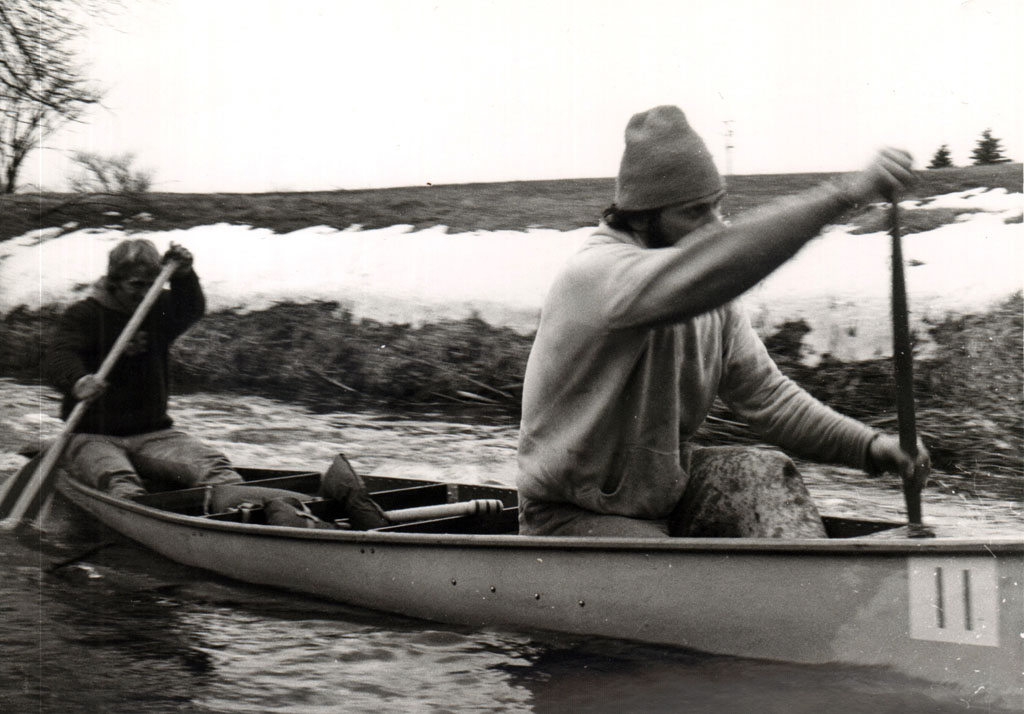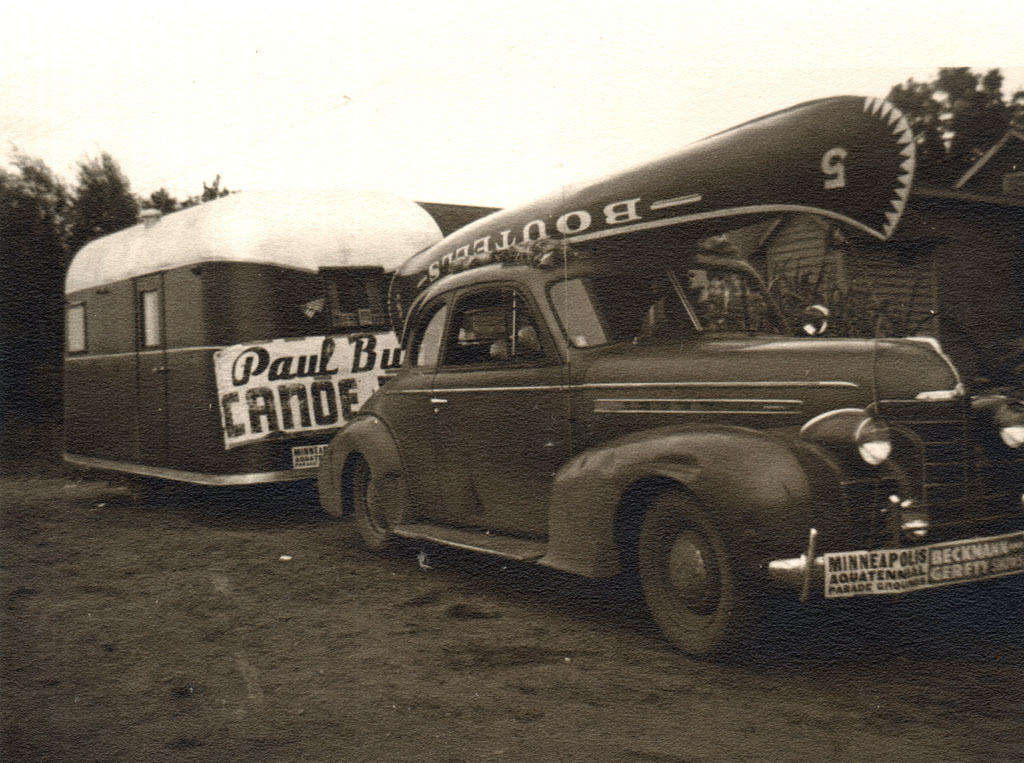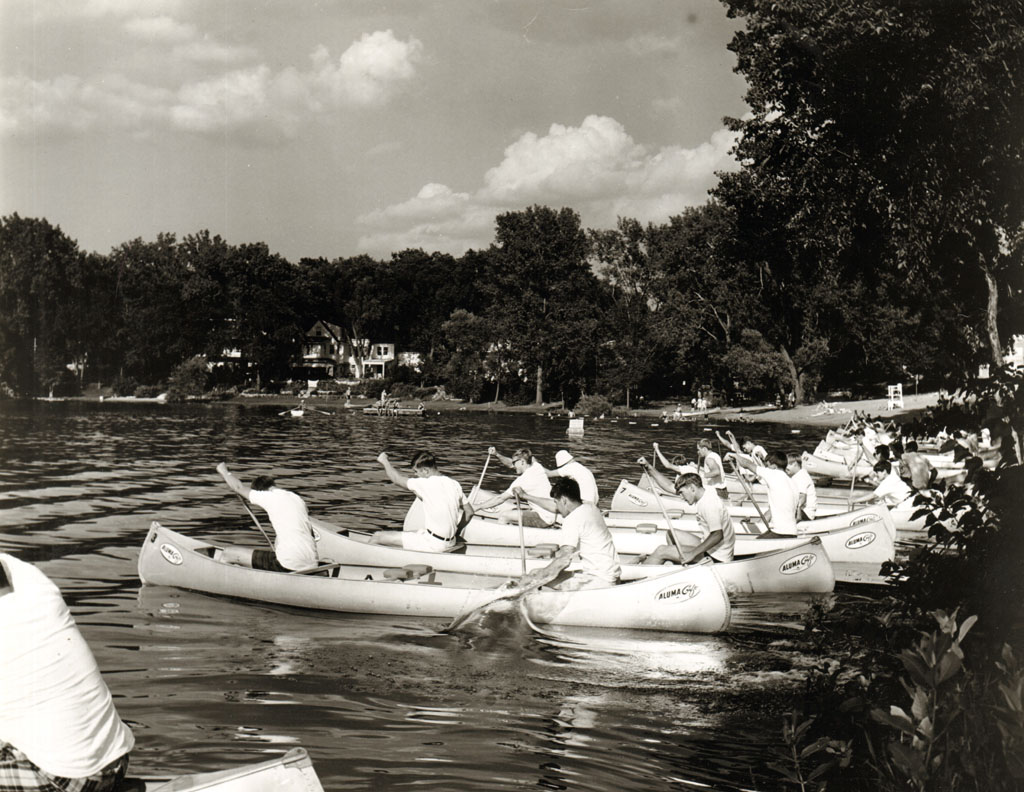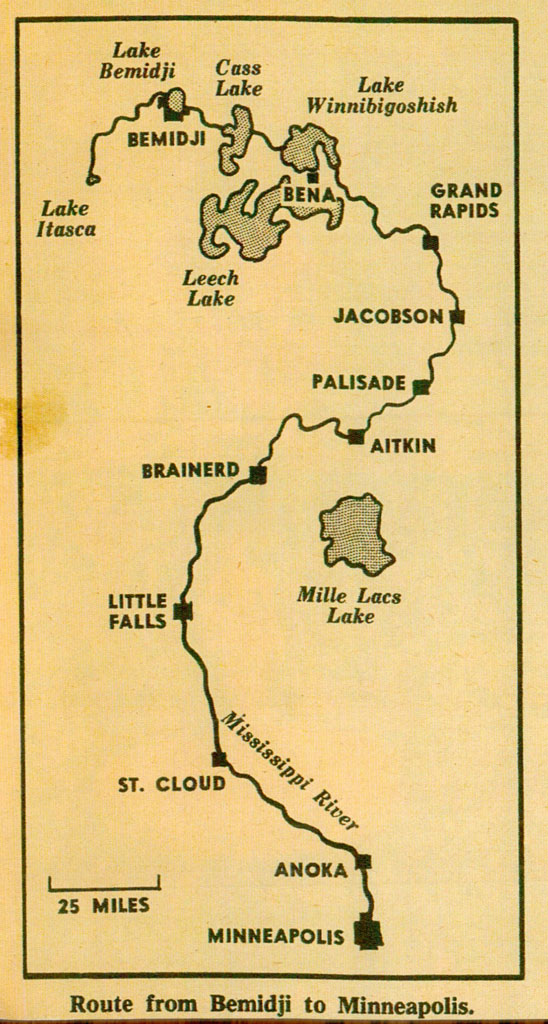Canoe Derby connected MN communities during early Aquatennial years
The Mississippi River weaves its way from Bemidji to Minneapolis, covering 450 miles and connecting countless towns along the way. For a little more than two decades, it was also a celebrated path to Aquatennial that essentially kicked off and kept afloat the Best Days of Summer.
From 1940 through the early 1960s—with a few years missed in between—the Aquatennial Canoe Derby brought teams together to compete for prize money and Aquatennial bragging rights as they navigated the Mighty Mississippi with canoes below and paddles in hand.
Today, canoeing continues to be a part of typical Aquatennial celebrations. Wilderness Inquiry offers voyageur canoe rides in Loring Park and on the Mississippi River during typical Aquatennial years, and this year they are offering virtual video experiences highlighting Minneapolis canoe routes.
In Aquatennial’s early years, the Aquatennial Canoe Derby took on different lengths over the years, with the longest version stretching from Bemidji to Minneapolis and including 10 checkpoint stops at various Minnesota towns—many of which hosted celebrations for the canoers upon arrival.
After legs of the race that typically took 8-10 hours to complete, competitors embraced and welcomed the festivities.
“There would be overnight stops, and communities would put on a festival when they were there,” Hennepin History Museum’s Aquatennial Collection Volunteer Archivist Ken Hafften said. “They would stay overnight in church basements. Then the community would host whatever events they might have. Community goers really got involved.”
(Article continues below photo gallery. Photos of past Aquatennial Canoe Derbies are courtesy of Hennepin History Museum)
The first canoe race in 1940 had two installments—the main race that went from Bemidji to the Camden Bridge in Minneapolis, and then a sprint race from the Camden Bridge to the Franklin Bridge with a portage at St. Anthony Falls.
Over the years, variations of the race featured routes beginning at St. Cloud and Anoka before ending in Minneapolis.
Prizes ranged from $1,200 in 1940 to $13,000 for the winners in 1951. Participating teams varied from two dozen teams to as many as 50 in 1949.
That 1949 race featured the first female entrant in the derby, and it also was one of four races won by Gene Jensen and Tom Estes—a four-time championship duo that won in 1948, ’49, ’50 and ’60.
Entrants’ standard minimum age was 17 years old, and Hafften said most participating teams were from Minnesota. In its later years, Explorer Scouts made up the field of competitors.
The serene yet grueling path sometimes featured as many as 87 miles covered in a single day. While the Aquatennial Canoe Derby’s last race took place in the early 1960s, it was a big part of Aquatennial’s schedule in its early years.
To view more past and present Aquatennial content, visit www.aquatennial.com/aqua2020.
